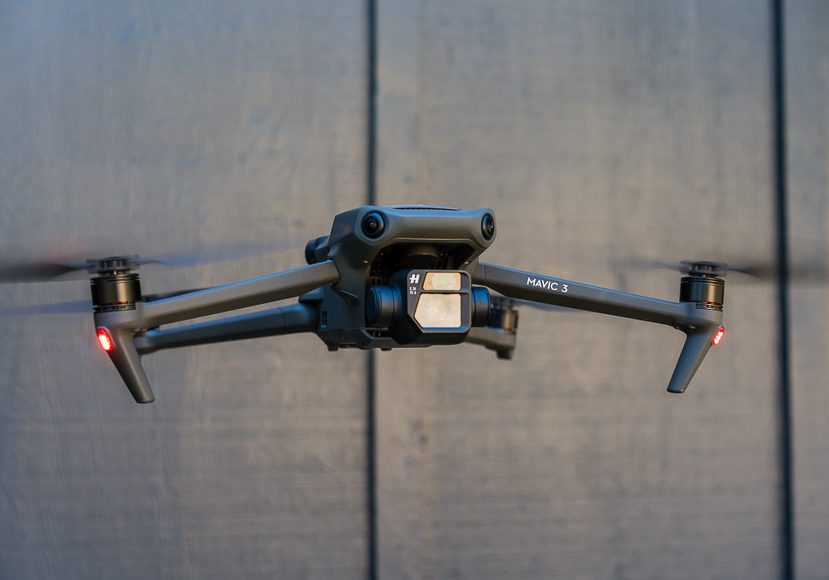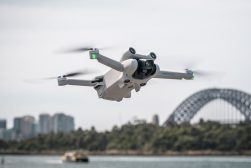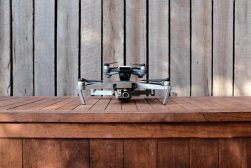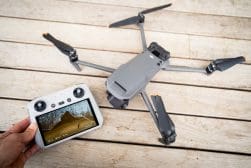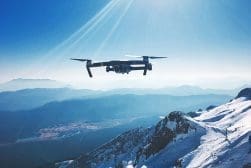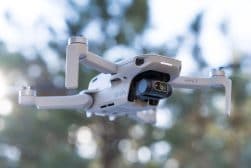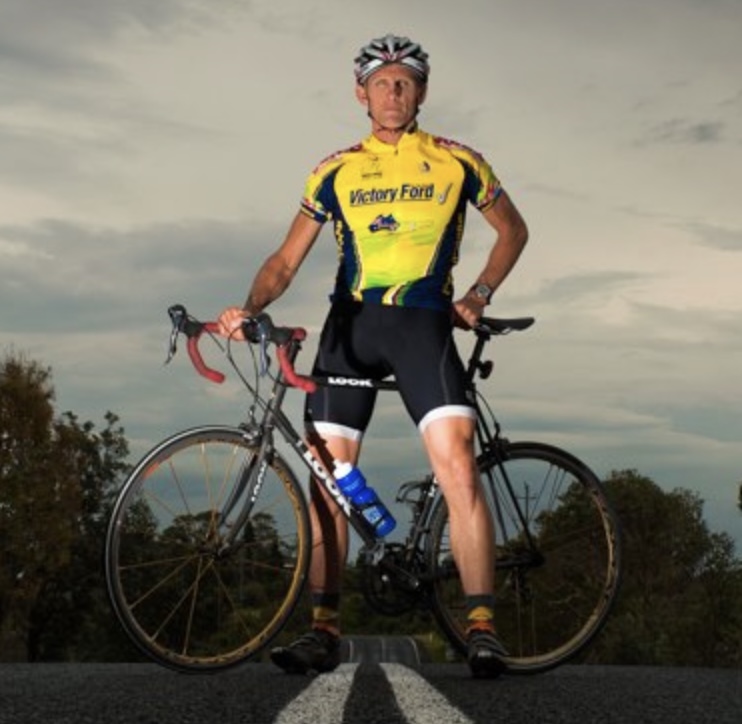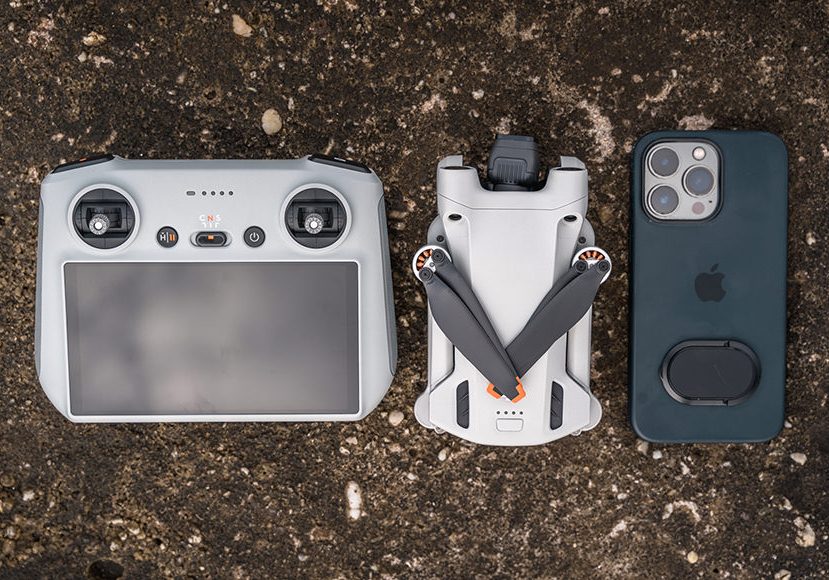
Best Mini Drones with Cameras in 2023
Delve into our detailed review of top mini drones with cameras, showcasing devices that combine portability with high-quality aerial photography capabilities
Mini camera drones are popular for good reason.
They’re obviously smaller and lighter, but they’re also quieter and less expensive too.
I own a Mavic Mini and keep it in the glove compartment of my car, ready to fly any time.
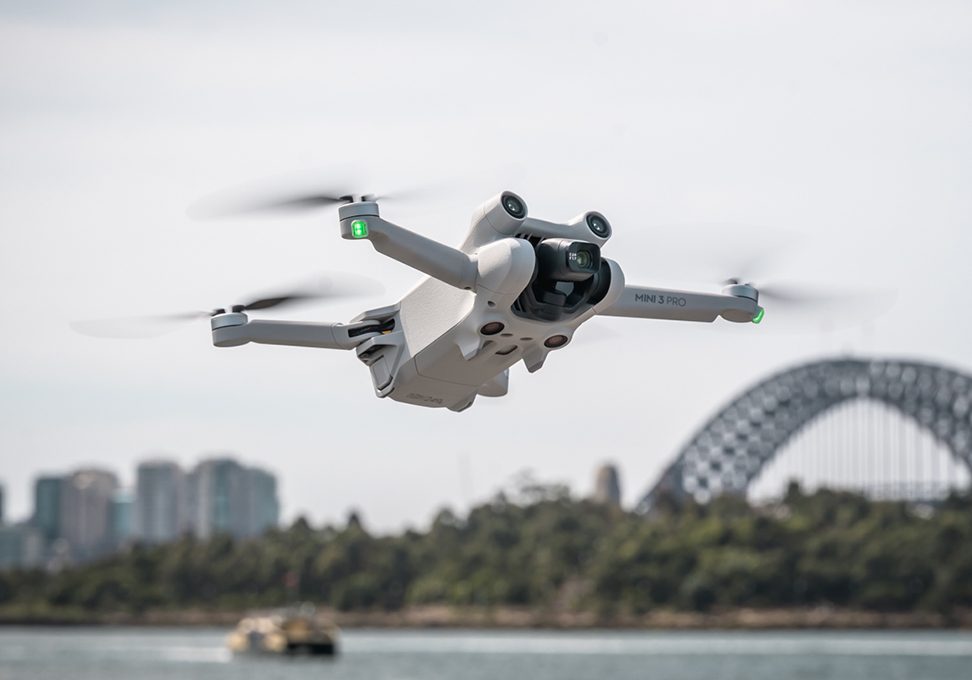
Impressive flight time and range in a compact body, with quiet operation, vertical shooting, 4K video, and the best obstacle avoidance of any mini drone.
If you’re looking for an easy-to-fly compact and portable drone that’s perfect for beginners, a mini drone is the answer.
This guide is about the best mini drones with cameras that produce excellent image quality for pictures and videos.
Table of Contents
What is the Best Mini Camera Drone in 2023?
DJI Mini 4 Pro (Best All Round Mini Drone)

Credit: Tommy Williams
- Good flight time
- Compact and durable mini drones
- Vertical shooting option
- Good flight range
- Shoots 4K
- Mini 3 Pro Filters are incompatible
- Struggles in very strong winds
The DJI Mini 4 Pro is the best mini camera drone overall, with a camera that’s solid enough for crisp photography and videography combined with good flight time.
It’s also relatively inexpensive compared to other mini drones in this guide. Despite its low price, it has a great flight range of 12 kilometres and good specs.
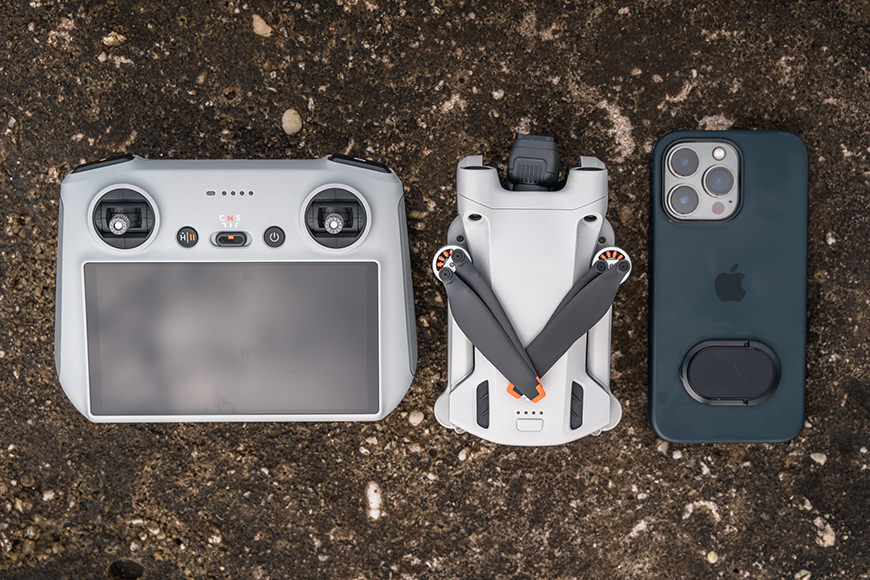
The DJI Mini 4 Pro offers exceptional image quality despite being as small as a smartphone | Tommy Williams
It’s capable of shooting 4K footage at 30fps and now 60fps (an upgrade on the Mini 3 Pro) and 1080p at 120fps.
It can also shoot in those same resolutions vertically, which makes sharing short-form vertical footage to Instagram Reels or TikTok much easier.
With most other mini drones, you can get vertical footage by cropping horizontal footage, but that means it’s lower resolution. The DJI Mini 4 Pro has a tilting camera that films at full resolution whichever way it’s turned.
It’s light, compact, and foldable. At just under 250 grams the DJI Mini 4 Pro is a high quality mini drone you can fly legally pretty much everywhere – you don’t need to have a special certificate to do so.
Because of its low weight, it can be slightly unstable in strong winds. However, thanks to this low weight, this mini drone is exceptionally durable and can survive crashes that would damage bigger, heavier mini drones.
It’s also a quiet drone which makes it useful for unobtrusive aerial filming, although the tone of the propellers is more high-pitched, like a swarm of angry bees.
Another feature that makes this mini drone more portable (and kind of more ‘mini’) is its dual-function battery case and charger. This is obviously great for charging up when you’re on the go.
It has a great flight time of 34 minutes (45 minutes if you use the newer battery), and the DJI Smart Controller can transmit up to 20km.
Autel Evo Nano+ (Best Non-DJI Mini Drone)
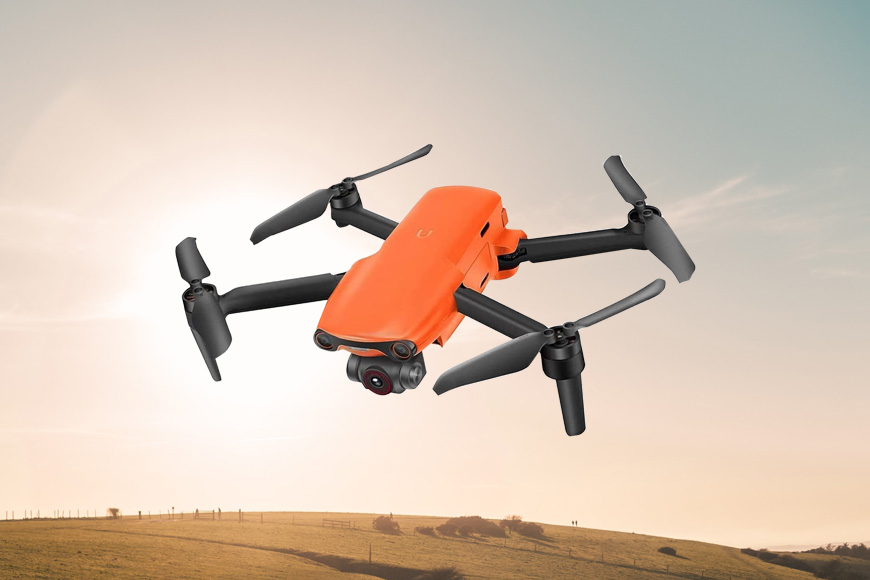
- Lightweight and compact
- Shoots 4K video
- Great sensor
- Leica lens
- Stability in strong winds could be improved
- Battery life is much shorter than competitors
The Autel Evo Nano+ is Autel’s first sub 250g mini drone and, to my mind, the best mini drone with a camera that doesn’t belong to DJI, which almost completely dominates the entire market.
This mini drone is cheaper than the DJI Mini Pro but with a slightly higher camera resolution.
It has an excellent 1/1.28-inch CMOS sensor – which is great for low light conditions – housed in a 3-axis gimbal and can shoot 50-megapixel images and 4K video up to 30fps.
The sensor is paired with a fixed f/1.9 Leica lens, and it delivers stunning image quality.
It has a particularly nice drone controller with an ergonomic grip and joysticks, which respond well and are neither too tight nor too loose.
The transmission signal between the controller and the mini drone is outstanding, keeping the connection up even through obstacles.
Obstacles the mini drone can also avoid with ease thanks to its front, rear, and bottom obstacle avoidance sensors.
Both the mini drone and the controller have internal cooling fans to prevent overheating when in use.
It has internal memory storage of 64GB and also takes microSD cards to increase the capacity.
DJI Mini 2 SE (Best Budget Mini Drone)
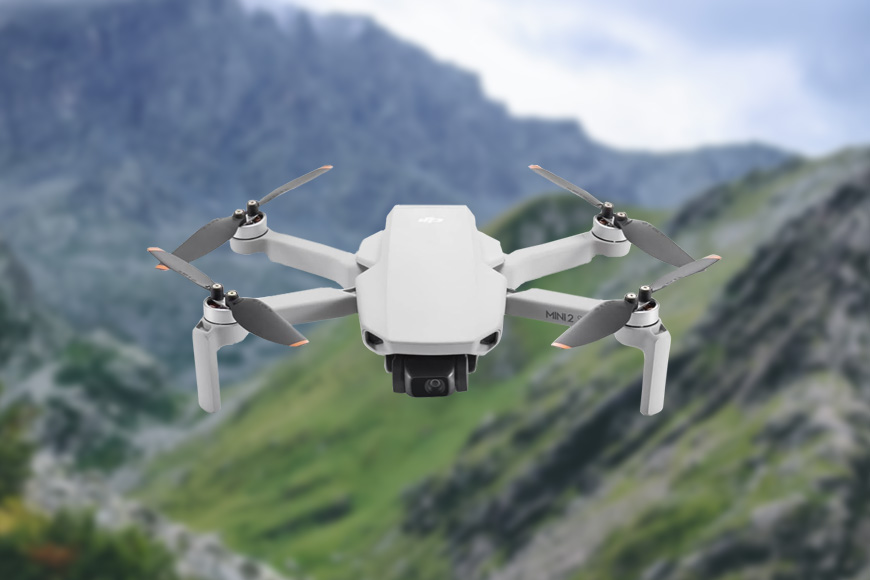
- Good flight range
- Very affordable mini drones
- Stable in high winds
- Great for beginners
- Compact
- Footage is relatively low-resolution
- Newer models available
The DJI Mini 2 SE is the best budget mini drone in this guide. It only costs $400, but despite that low price tag, it has great specs.
It captures 2.7K video at up to 30fps, and 1080p at up to 60fps, in a very compact package.
It weighs less than 250 grams, so it’s both portable and easy to use pretty much anywhere.
That weight means there are fewer use restrictions and also no need to register the mini drone with any flight authority.
Despite being so light, these mini drones don’t have a problem flying in strong winds, and whether they’re flying or hovering, they stay quite stable.
The DJI Mini 2 SE is an excellent option for beginners, too, with its range of intelligent flight modes and features such as Return Home.
This means that if the controller dies or the drone’s battery starts to run low, it will automatically turn around and fly to where it last received a signal from.
It has a respectable flight time, too, especially for a mini drone at this price point. A full charge will get you 31 minutes in the air and at a maximum distance of 10 kilometres.
DJI Mavic 3 Pro (Smallest Pro Grade Drone)
- Hasselblad sensor
- Good flight range
- Shoots 5K video
- RAW image files
- Three lenses, three focal lengths
- Irritating gimbal cover
- Expensive
- Heavy
This isn’t exactly a mini drone, but it’s still relatively small and portable for a professional drone and the best option for endurance video recording, which is why it’s included in this guide.
The DJI Mavic 3 Pro is a pro-level drone with pro-level features.
Most mini drones have a single lens or, at the most, two. The Mavic 3 Pro, though, has three different focal lengths.
Its main lens has a Hasselblad sensor and is a 24mm with a variable aperture of f/2.8 to f/11. It shoots a maximum of 5K resolution footage at 50fps in 10-bit colour, 4K slow motion at 120 fps, and 20-megapixel RAW stills.
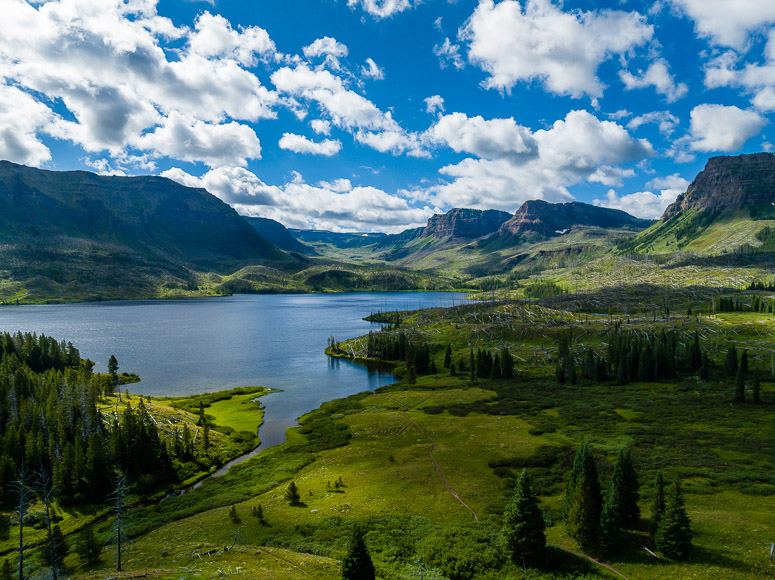
Mavic 3 Sample Image | Marc Bergreen
The other camera lenses are a 70mm medium telephoto and a 166mm telephoto.
Both these lenses can shoot RAW files and 4K video at up to 60 fps, although neither offers the 5K resolution of the main lens.
And how about that endurance? The DJI Mavic 3 can stay in the air for around 43 minutes on a full charge, and it can fly up to 28 kilometres away, making it a great long range drone.
Fimi X8 Mini V2 Combo 3-Axis 4K Foldable Drone
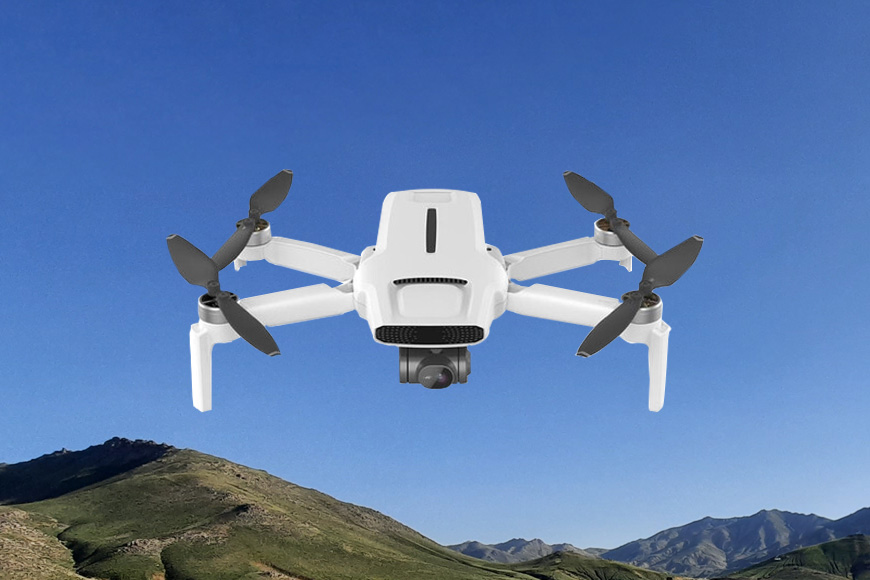
- Can fly from an app
- 4K video and RAW stills
- Multiple flight modes
- Compact and lightweight mini drones
- Oversaturated images
- Tracking modes poor at higher speeds
This mini drone weighs just over 250g and folds down to a nice and compact size.
You can fly it joypad-style from the extendable controller (which is big enough to fit the largest mobile phones), or directly via Wi-Fi from the Fimi app. However, you should be aware that if you fly it from the phone, the transmission range is significantly smaller.
The mini drone is capable of shooting 4K footage at 30fps and 2.7K at 60fps. Plus, it can also shoot RAW stills.
There’s no external battery to worry about, as you charge the Fimi X8 mini via USB-C or USB-A.
It has a host of intelligent flight modes, such as Orbit and Spiral, and also includes Waypoints for completely pre-programmable flights.
It has decent low-light performance, too, and the mini drone uses an AI algorithm for noise reduction so that footage is smooth out-of-camera.
It’s not a pro-level mini drone by any means, but given its specs at the price, it’s a good option for beginners or those looking for mini drones on a budget.
DJI Avata Pro-View Combo FPV Drone with RC Motion 2

- Compact and easy to pack away
- FPV mini drones
- Excellent google displays
- Durable
- Battery life isn’t great
- Expensive
The DJI Avata is a pricey mini drone if you include the controller, but this is a highly-rated, compact mini drone with lots of good specs and good shooting abilities. And it really needs its bespoke controller, as that’s half the fun.
And with this mini drone, it’s all about the First Person View (FPV).
This is a unique perspective that leads to both a particular kind of flying experience and a particular kind of footage that makes you feel that you are in the action.
It’s mini drone meets virtual reality, and it’s one of the best FPV drones for consumers.
Instead of viewing the footage via a screen, you see it through goggles with sharp OLED displays that have zero latency.
The controller is the hand-grip style DJI Motion controller. You move the mini drone around in the air through your hand movements.
It’s sort of like holding a fighter jet’s joystick in the air. You can bank and roll and quickly and easily make micro-adjustments to the drone’s flight path.
Bear in mind that if you’re prone to motion sickness, you’ll need to take regular breaks, as flying the DJI Avata can be quite an intense experience.
The mini drone is durable, partly due to its strong and lightweight construction and partly due to its enclosed propellers, a protective drone flying cage to both protect other people and also protect the mini drone from lighter obstacles.
This was a problem on the predecessor, so it’s good to see this sorted out. As this is a mini drone that encourages drones to fly fast and close to obstacles, it needs all the protection it can get.
These mini drones give you up to 18 minutes of drone flying on a fully charged battery, which doesn’t sound like a lot and really isn’t a lot, but considering how intense FPV flying is, maybe it’s enough.
But it’s not all about the flying experience; these mini drones shoot good-quality footage too.
The camera can shoot smoothly stabilised 4K video at up to 100fps, which has rich colours and detail.
Are Mini Drones Any Good?
Mini drones with cameras, such as the Mavic Mini series, have become increasingly popular in recent years, offering a blend of portability and imaging capabilities.
Their compact size makes them incredibly convenient for spontaneous aerial photography, especially during travels or quick outdoor adventures.
While they might not match the advanced features and image quality of larger, professional drones, many of today’s mini drones boast impressive camera specs suitable for hobbyists and casual users.
One of the primary advantages of mini drones is their affordability. They provide an entry point for those curious about aerial photography without the hefty investment that high-end drones demand.
Furthermore, their user-friendly nature, often equipped with intuitive controls and automated flight modes, makes them ideal for beginners.
However, it’s essential to manage expectations. Mini drones might struggle in challenging conditions, such as high winds, and their battery life is typically shorter than that of larger drones.
While their imaging capabilities are commendable for their size, they might not be the best choice for professional-grade photography or videography.
Pros of Mini Drones with Cameras
- Portability: Easy to carry around, making it perfect for travel.
- Affordability: Generally cheaper than their larger counterparts.
- User-Friendly: Often designed for beginners, with intuitive controls.
- Less Intimidating: Their smaller size can be less daunting for first-time users.
- Regulations: Often exempt from certain aviation regulations due to their lightweight nature.
Cons of Mini Drones with Cameras
- Limited Features: Might lack advanced camera settings or flight modes.
- Durability: More susceptible to damage, especially in windy conditions.
- Battery Life: Typically shorter than larger drones.
- Range: Might not fly as far or as high as larger drones.
- Image Quality: While good, it might not match the quality of more professional drones.
How to Maximise the Battery Life of a Small Drone
One often cited disadvantage of mini drones is their shorter battery life when compared to larger drones.
Here are some tips to help maximise the battery life of your mini drone:
- Fly in Optimal Conditions: Avoid windy or extreme temperatures, and maintain steady flights.
- Battery Care: Store in cool places at 60% charge, avoid overcharging, and land when the battery reaches 20%.
- Minimize Weight: Remove unused accessories to reduce power consumption.
- Update Firmware: Ensure your drone’s software is current for optimized battery management.
- Use Power-Saving Modes: Engage any battery conservation settings or modes.
- Calibrate: Ensure the drone’s compass and IMU are accurate to prevent unnecessary stabilization efforts.
- Monitor Flight Time: Track battery performance and replace aging batteries.

Impressive flight time and range in a compact body, with quiet operation, vertical shooting, 4K video, and the best obstacle avoidance of any mini drone.





